The problem with brand-new televisions in 2022-23 is that all of them, especially those at the higher end, are brilliant. It means that as reviewers, there’s a tennis match going on in our head between declaring QLED, then OLED, or Mini-LED as king, dependent on what we’ve just walked away from. That’s the dilemma I have right now, having just spent the night with the Samsung Neo QLED 8K QN900C Smart TV.
What would make this decision easier? I hear you ask. Maybe having them side by side, all playing the same content in sync? But to tell you the truth, they would all look stunning. What I can tell you, however, is there’s something about the Samsung Neo QLED 8K QN900C Smart TV that points to a new benchmark.
Mostly because the 8K is just … so refined.
Samsung Neo QLED 8K QN900C Smart TV
The 2023 8K offering from Samsung comes in 65-, 75- and 85-inch models, promising incredible picture quality thanks to the ultra-fine light control of Quantum Matrix Technology Pro, and in the case of the two larger models, Neo Quantum HDR 8K Pro. Quantum Matrix Technology Pro sees Samsung take Mini LEDs and shrink them down to one-quarter of the size of other backlights, promising to focus their light more precisely. Increasing the amount of zones inside the TV means there’s more refinement in the contrast, deeper blacks (not just a wall of black, the different black tones are distinguished, clean and textured), superb detail (think pores on a face or feathers on a bird), and bright brightness.
With a big screen, the pixels are stretched more, but that’s why Samsung has packed 33.1 million pixels into this model (this model was the 85-inch, by the way).

Q is for ‘quite immersive’
The first thing I noticed glancing up at the TV from the lounge was the lack of glare. Above everything else TV makers ram into screens these days, the thing Aussies seem to care most about is whether or not they can watch something uninterrupted by window glare. And apparently, also size, hence the smallest model in the QN900C range being 65-inch.
Although the TV was on the Samsung home screen, a non-aggressive UI that’s super easy to use and isn’t trying to be something it’s not, the glare just was not there. To set the scene, I was at Sydney’s QT, a gorgeous 5-star boutique hotel that’s oozing with quirky personality. Framed by two emerald velvet sofa seats, suspended on the timber panelled wall, with the 6pm setting sun beaming through the windows, the Neo QLED TV was without a single reflection. It also looked soft.
To showcase the 8K scaling, I had to put on some terrible YouTube 8K content – terrible because the footage is stunning but the filming is … look, it’s a brilliant showcase of 8K. The thing that blew me away was how bright the colours were, probably more brilliant than in real life, and even up close, the matte-like coating on the screen meant the colour wasn’t lost and there was no bleeding between the edge of the bird’s head and the vivid blue sky. I could see every hair on the monkeys, with clarity that made me feel I could reach out and run my fingers through it. And I learned just how expressive giraffe’s faces can be.
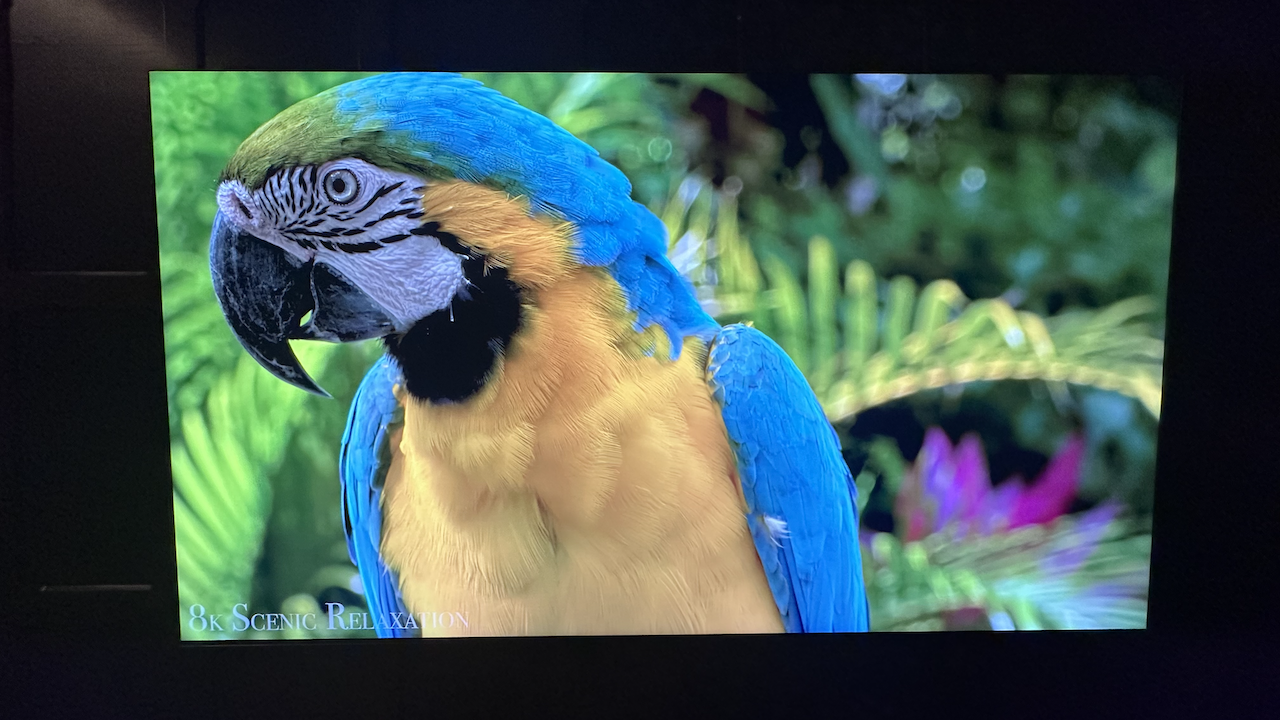
While having something to eat, I put on You, not expecting the content to be good for reviewing a TV – that was until I realised just how much of the show is dark. Filmmaker mode allowed the blacks to not be a wall of black that caused reflection from the ceiling light to be consuming, it was all viewable.
You isn’t 8K, of course, but it is streamed out in 4K HDR, leaving the Samsung Neo QLED TV to do the bare minimum, really, in upscaling to 8K.
Over on Amazon Prime Video, Rings of Power almost made me want to start watching the show. It’s the most expensive TV show ever made and Prime didn’t spare any expense on visuals. Take a look at this sand (phone will never do it justice, but hopefully you can start to see what I mean).

Sport was where I was let down, however. Sport is probably what I spend 40 per cent of my television time watching, and with Foxtel focusing a lot on 4K NRL streaming through Foxtel/Kayo, I was excited to see how it would render on the Samsung Neo QLED 8K QN900C Smart TV. Unfortunately, it was underwhelming. It was almost like noticeable auto-tune, but for images. The frames were jolty, even switching between different picture modes. It wasn’t akin to watching the footy on a 2015 budget TV by any means, it just wasn’t the most perfect experience like everything else was on the Neo QLED TV. This actually turned out to be a great way to show you just how drastically different picture modes can be on a TV, regardless.
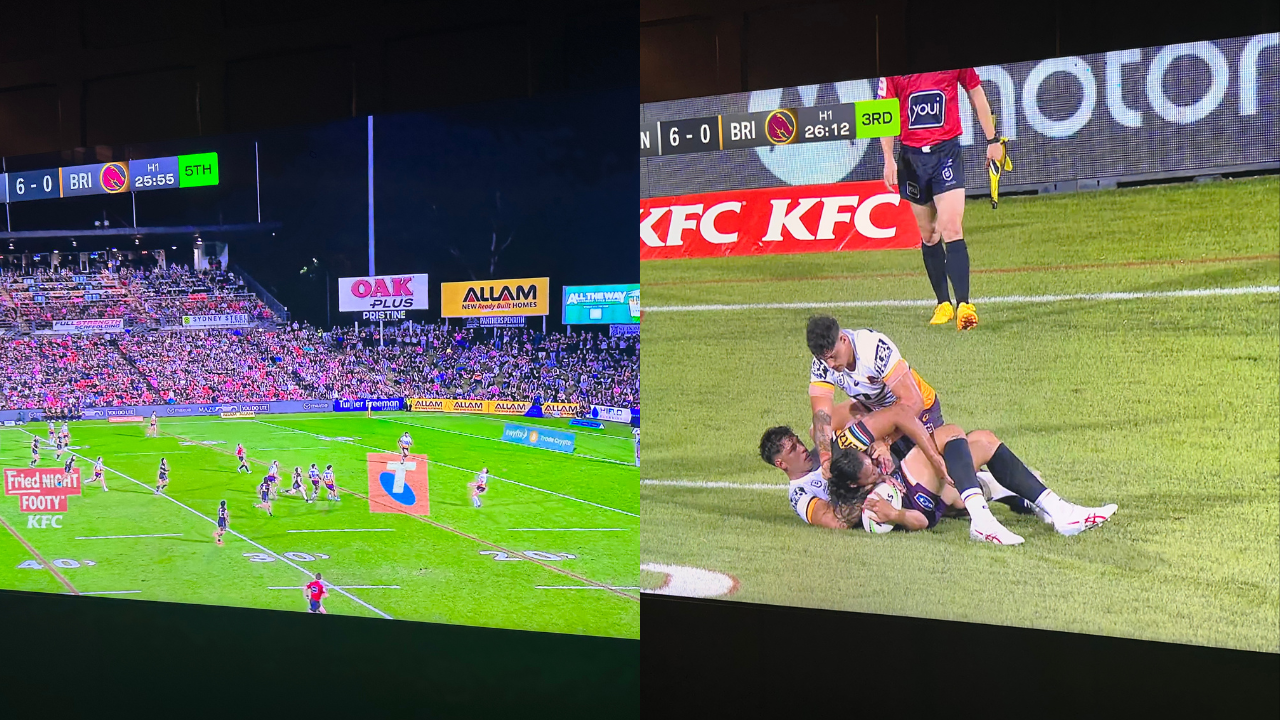
Watching some cars go round a track, I was mesmerised. This was probably HD content being upscaled. Big screens making things bigger, having to compensate by having more pixels but then also upscale the content at the same time, it’s clear Samsung has made significant improvements with 8K AI upscaling. It’s very clear that watching non-8K content looks better on an 8K TV than it does 4K because of that.
Of course, if you were to simply focus on one small detail, you’ll find places where there’s blur or motion bleed in upscaled content, but the fact of the matter is the TV is pixel-by-pixel, frame-by-frame changing the content and upscaling it on the fly. The processing power in this thing is ridiculous.
Trying to test out each streaming service in my few hours with the Samsung Neo QLED 8K QN900C, I popped on The Menu on Disney+ and just sort of forgot to turn it off. I watched the entire thing. Switching on the soundbar (more on that in a sec), I really felt like I was at the cinema with the combination of brilliant sound and gorgeous graphics.
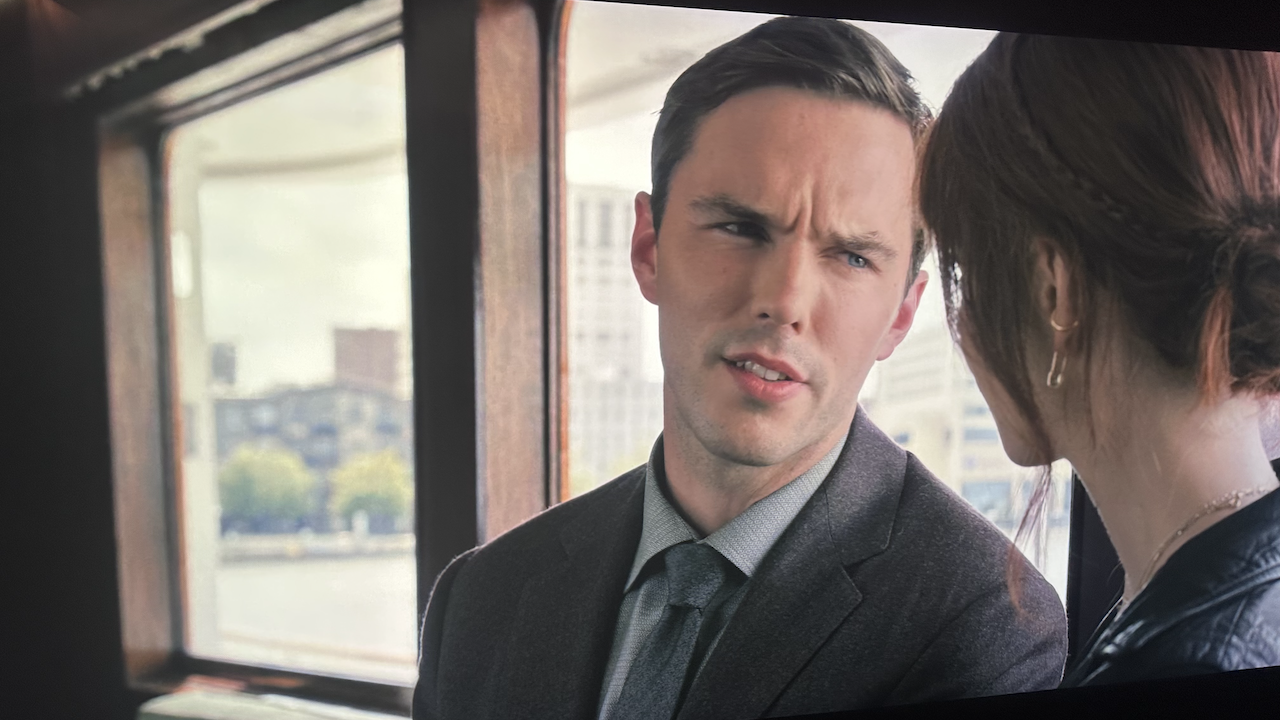
After that wrapped up, I headed over to YouTube to give something old and poor quality a go, just to see just how good the upscaling could be. If you’re going to watch old-quality, standard definition, it’s not going to be as good as watching HD. It’s pretty straightforward that the better the quality, the better the upscaling because there’s less work that needs to be done: with the Neo QLED 8K QN900C, Samsung isn’t really performing magic, after all, it just seems like it is.
That being said, Ramsay was still as impeccable as always.
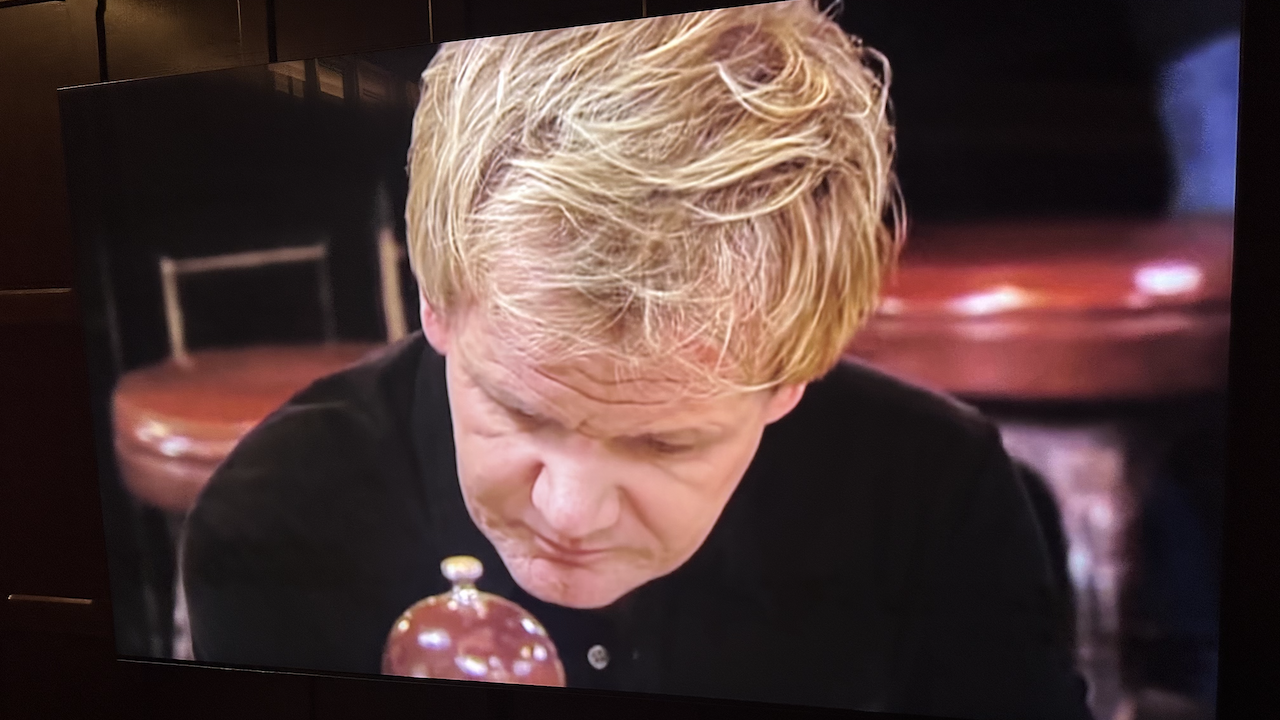
The next morning, I opened the curtains up as far as they could go, and put something on Netflix that sounded like it would have a lot of black colours in its palette (I forget the name of the show and couldn’t find it on my account). You can see the light landing on the screen, particularly the curtains coming through down the left-hand side.

L is for ‘lacklustre sound’
I’m very used to watching a TV with a soundbar and sub (or 2x Apple HomePod speakers with the Apple TV 4K in my bedroom), so I will admit the sound from the Samsung Neo QLED 8K TV was not great. The sound from TV was clear, however, and it was only when I connected the soundbar that I realised just how lifeless the TV’s sound was.
After fiddling around with the soundbar, I turned it off, went away for a minute or two and came back. It genuinely didn’t feel as though I was missing out on much until I turned it back on. As I’m also going to give you my review of the soundbar, I won’t go too much into it here, but if you’re spending this much on a TV, you’d be silly to not invest in a great sound system, too. What’s really great with a Samsung TV and soundbar combo is the ability to use both the TV and the soundbar sound. It’s a whole other ballgame. Samsung calls this Q-Symphony.
It uses the TV and soundbar speakers at the same time. It doesn’t replicate the sound, rather it splits the sound between them, giving you better sound quality and more emersion instead of the TV speakers becoming essentially useless and muted. It really does create a virtual surround sound experience when watching TV because the TV itself has other speakers built in (on the back of the TV) as well, so it actually elevates the height and sends the sound out around you.
If you’re opting for a 75- or 85-inch TV, chances are your loungeroom isn’t small and the sound from the TV is going to drag down your experience.
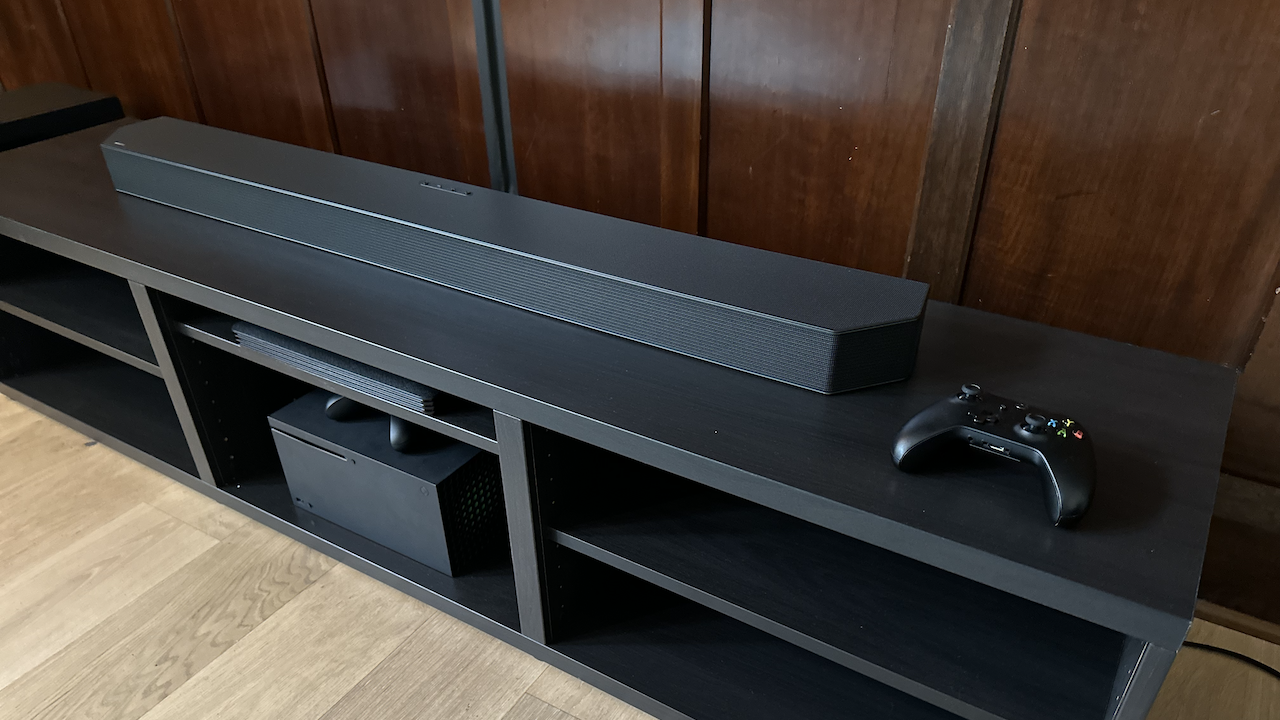
E is for ‘everything else’
The Neo QLED 8K TV comes with the same Samsung user interface you’ve probably already used, it’s just more refined – and it’s super responsive. The TV’s settings are also easy to navigate, accessed via the home screen or while in viewing mode (without blocking what you’re watching). The remote, unlike LG’s, is accessible and not overly cluttered. Samsung also wants you to use your TV as a smart things hub, and apparently connecting everything is seamless and quite intuitive.
I didn’t set up the TV, nor did I have to sign into anything, so I can’t comment on this process, and the same goes for gaming. With such a restricted timeframe – overnight versus a week – it was 1am when I realised I hadn’t turned the Xbox on. But, I’m sure the experience sits somewhere in between my TV show and sport watching experience.
It’s also very thin, sits quite flush to the wall if you’re able to mount it, and the bezel (frame around the screen) is very minimal.

D is for ‘decision’
With the Neo QLED, Samsung has made an absolutely gorgeous and benchmark-setting 8K TV. The display is immersive, sound is good enough, elevated to exceptional with the addition of a soundbar, and it was one of the most pleasant TV experiences I’ve ever had. If this is what Samsung is doing with 8K in 2023, I can’t wait to see what they do in a few years when more content to truly showcase the tech emerges.
Where to buy the Samsung Neo QLED 8K QN900C?
The Good Guys $10,995 | Bing Lee $10,995 | Harvey Norman $10,995
